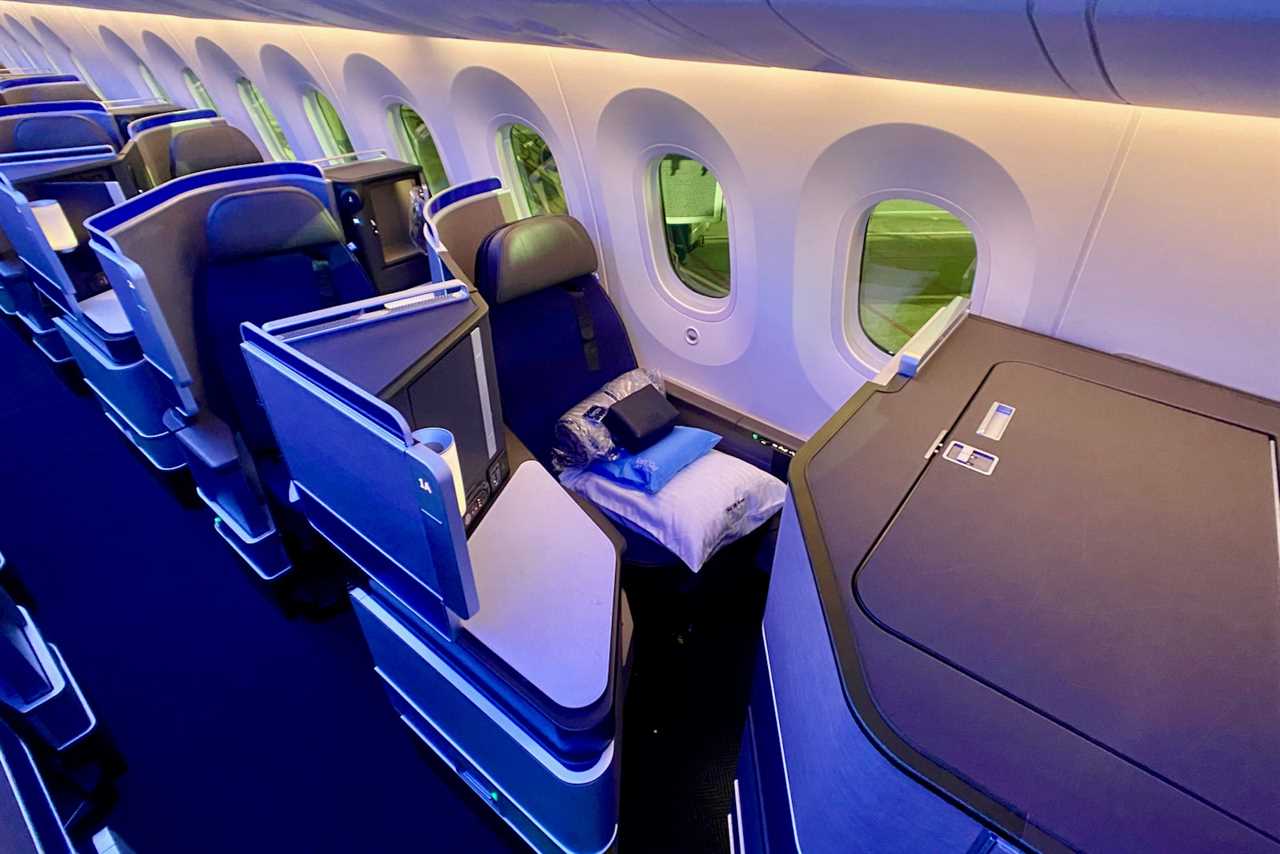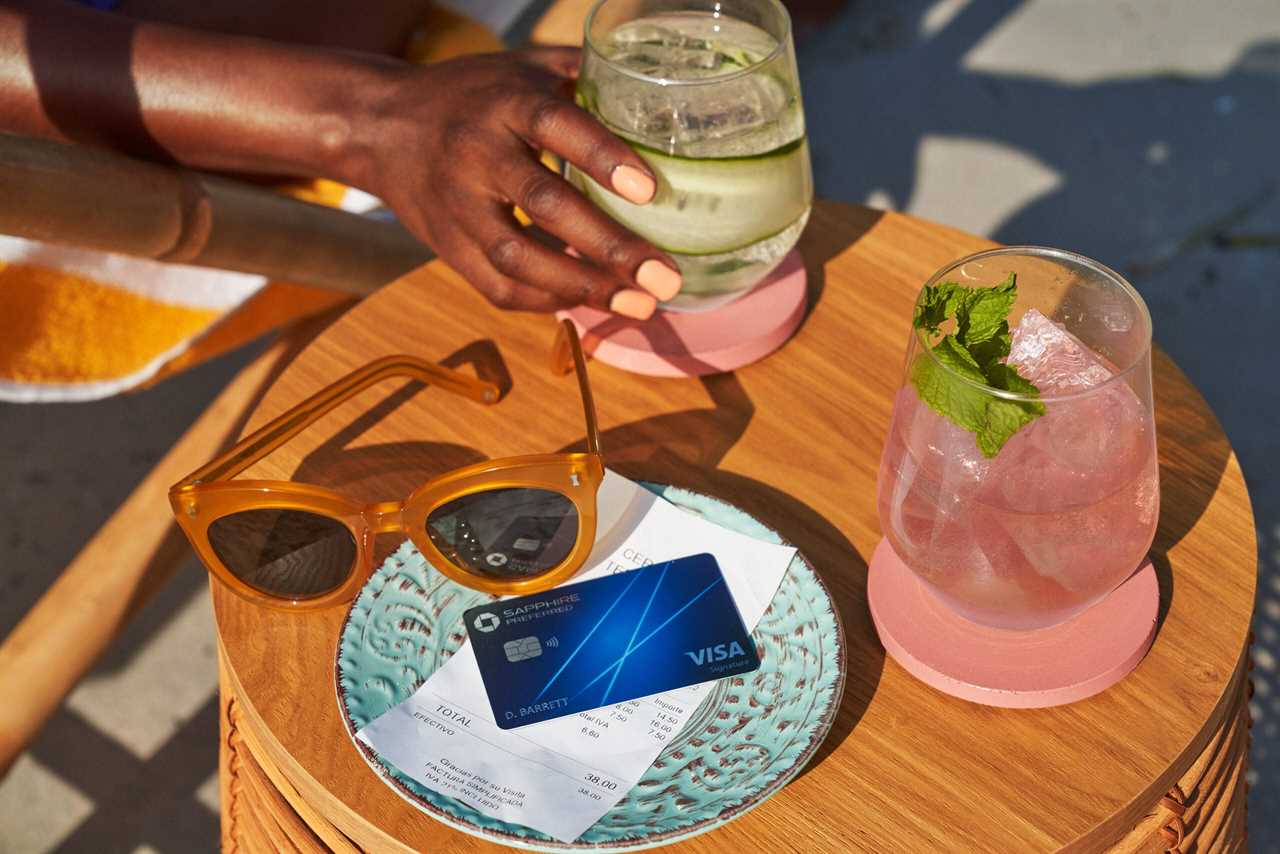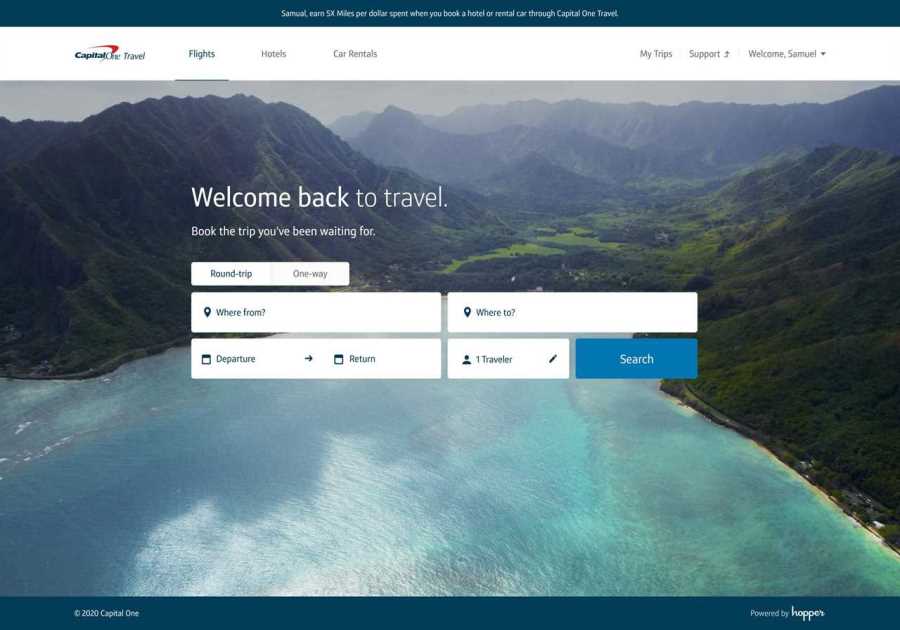HOSTED BY: 1 AIR TRAVEL
Editor’s note: This is a recurring post, regularly updated with new information and offers.
It’s easy to decide you want to be able to travel for less. It can be hard to know where to start. And while we have a guide to getting started with points and miles, the advice doesn’t even have to be as involved as parsing through a guide.
The overwhelming majority of the time, my number one recommendation for those looking to delve into earning points and miles is to first get the Chase Sapphire Preferred Card.
It is a classic travel rewards credit card that has been around for almost 15 years, but that doesn’t mean it is stale. In fact, it means it’s a classic that has stayed with the times since it was launched in 2009. But in this case, it’s tough to top this classic when starting in the rewards credit card landscape.
Right now, that advice to start with the Chase Sapphire Preferred® Card is even more poignant as it has an increased sign-up bonus of 80,000 bonus points after $4,000 in spending in the first three months.
So whether you’re looking for which card to start with — or which card to get next — here are five reasons why the Chase Sapphire Preferred is still my most frequently recommended card.
Great sign-up bonus
The sign-up bonus for the Sapphire Preferred varies, but right now, it’s pretty great at 80,000 bonus Ultimate Rewards points after $4,000 in spending in the first three months. That’s up from 60,000 points, the most common bonus for this card in the last few years.
Use points for stays at places like the Park Hyatt St. Kitts. ZACH GRIFF/THE POINTS GUY
TPG values the 80,000 point bonus at $1,600, but that is based on maximizing the points with Chase’s hotel and airline transfer partners. Being frank, learning to maximize your Chase Ultimate Rewards points with transfer partners such as Hyatt and United is absolutely possible but does take a little research. Some of those newer to the world of credit card rewards may not always get much value from the points.
However, even if you use the points directly for travel booked through Chase, you’ll still get 1.25 cents in value per point. That’s the same as getting $1,000 in value from the bonus. Even at that fixed valuation that comes in lower than if you maximize your points with partners, that’s a great sign-up bonus that requires little effort to utilize.
Related: Sign-up bonuses worth $1,000 or more
Outstanding transfer partners
Once you get the hang of it, the lineup of transfer partners available with the Chase Sapphire Preferred is stellar.
Related: How to redeem Chase Ultimate Rewards points for maximum value
These transfer partners are Aer Lingus AerClub, Air Canada Aeroplan, Air France-KLM Flying Blue, British Airways Executive Club, Emirates Skywards, IHG Rewards, Iberia Plus, JetBlue TrueBlue, Marriott Bonvoy, Singapore Airlines KrisFlyer, Southwest Rapid Rewards, United MileagePlus, Virgin Atlantic Flying Club, and World of Hyatt. Unlike other card programs, transfers from Chase to these partners are at a 1:1 ratio (or higher, with occasional transfer bonuses).
This means that 80,000 Chase Ultimate Rewards points could be turned into the equivalent of 80,000 Southwest Rapid Rewards points — or 80,000 United MileagePlus miles or 80,000 World of Hyatt points. The list goes on. This opens up many more uses for your points than if they were locked into earning and redeeming with one loyalty program.

Transfer your points to United for Polaris seats. SUMMER HULL/THE POINTS GUY
Several transfer partners — such as United and Southwest — are relatively unique to Chase, so the lineup can’t be easily replicated with most other credit card programs.
The U.S.-based loyalty programs are often more comfortable places for those newer to travel rewards to start with point transfers than some international options where you can leverage partner bookings. Thankfully, Chase has a number of those for you to start with.
Related: How to transfer your Chase points to travel partners

Book Hyatt stays at resorts like Andaz Mayakoba with Chase points. SUMMER HULL/THE POINTS GUY
Low annual fee with added perks
Premium travel rewards cards such as The Platinum Card® from American Express and the Sapphire Preferred’s luxury counterpart (the Chase Sapphire Reserve) have replaced the Chase Sapphire Preferred’s slot in my own wallet. However, I travel multiple times per month and have been at the points and miles game for a long time.
Even if those cards are worth it — and they can be — rare is the points and miles newcomer wanting to start with a card that comes with a $695 annual fee (see rates and fees for the Amex Platinum) or $550 (for the Sapphire Reserve).
Testing the waters with a card like the Sapphire Preferred can be much easier, with just a $95 annual fee. When put up against a sign-up bonus valued by TPG at $1,600, that’s a minimal investment to try out a new-to-you card for at least a year.
Note that a relatively recent refresh of the card added even more perks that can partially offset the annual fee. For example, you can enjoy a $50 annual hotel credit for stays booked through Ultimate Rewards travel, and you’ll also receive 10% of your points back each year (based on your card spending).
Related: The 8 best credit cards with annual fees under $100
Good earning rates that can improve with time
The Sapphire Preferred doesn’t have the highest earning rates out there, but it still offers a solid return on many purchases — including newer categories that launched in recent years:
5 points per dollar on travel booked through the Chase travel portal.5 points per dollar on Lyft rides (through March 31, 2025).3 points per dollar on dining.3 points per dollar on select streaming services.3 points per dollar on online grocery store purchases (excludes Target, Walmart and wholesale clubs).2 points per dollar on all travel not booked through the Chase travel portal.1 point per dollar on everything else.These categories are quite broad, and travel includes everything from plane tickets and hotels to subway passes and parking garages. Dining includes everything from a five-star restaurant to fast food and DoorDash delivery services.

Since TPG values the points earned by this card at 2 cents each, you are getting anywhere from 2 to 10 cents in value per dollar charged to the card, depending on the category you’re spending in. However, once you are ready to “level up,” the Sapphire Preferred and its points can grow with you.
That’s because several other credit cards within the Chase family can be paired with the Sapphire Preferred when the time is right for you.
For example, the no-annual-fee Chase Freedom Flex earns up to 5% cash back (5 points per dollar) in rotating quarterly bonus categories (on up to $1,500 in purchases each quarter, activation required). While this is technically billed as a cash-back card, when you pair it with the Sapphire Preferred, you can transfer those points into your Ultimate Rewards account and use them the same as points earned by the Sapphire Preferred.
If you have a small business, you can pair the Sapphire Preferred with the no-annual-fee Ink Business Cash Credit Card or the Ink Business Preferred Credit Card to access even more bonus categories (some with yearly spend maximums). The Ink Business Preferred is currently offering a sign-up bonus of 100,000 bonus points after you spend $15,000 on purchases in the first three months of account opening.
Meanwhile, the no-annual-fee Ink Business Cash Credit Card for small-business owners is offering $750 cash back after you spend $6,000 on purchases within three months of account opening.
But again, if you have the Sapphire Preferred, that bonus can become 75,000 Chase Ultimate Rewards points instead of $750 cash, if you wish.
In short, having the Sapphire Preferred card unlocks the transferability for points earned from various Chase cards. However, you can also ignore all of that and stick just with the very versatile Sapphire Preferred as the only rewards card in your wallet.
Related: All about the Chase credit card trifecta
Easy-to-use rewards
The most mathematically rewarding way to maximize your Ultimate Rewards points is by transferring to the previously mentioned hotel and airline partners when the award availability tips in your favor. However, I like this card for beginners because … you don’t actually have to do that. In fact, I have many friends and family members who never redeem their Chase points via transfer partners.
You can use your Chase Ultimate Rewards points at a fixed rate to book flights, hotels and other travel via the Chase travel portal. With the Sapphire Preferred, your points are worth 1.25 cents each when used in that manner. If you or someone else in your household ever get the Chase Sapphire Reserve, points used that way are worth 1.5 cents each with that card.
The booking site operates the same as when booking travel via an online travel agency like Expedia, making it a straightforward and intuitive way to use your points even for those new to this way of traveling for less.
Chase makes it easier to get approved when you are newer to rewards cards
Last but not least, there’s the reality that Chase makes it easier to get Chase-issued credit cards before you get too far into your rewards credit card journey.
There’s an (unwritten yet well-documented) rule that Chase generally won’t issue a new credit card account once you have opened five or more card accounts across all banks in the last 24 months. Informally, this is known as the Chase 5/24 rule. That seems easy enough if you are used to only getting a new credit card once every few years, at most, but once you get into credit card rewards, it can be easy to use those slots as you get an airline card, hotel card, etc.
Because of this restriction, it makes sense to start by getting a Chase card, like the Sapphire Preferred, as one of your first cards before you could potentially run into a brick wall with opening new Chase accounts for some time.
Related: The best ways to fill your 5/24 slots
Bottom line
With its recently increased 80,000-point bonus, now could be the right time to dive into credit card rewards and get the Chase Sapphire Preferred Card.
It walks a wonderful line between being rewarding and rich when it comes to perks and points without being intimidating or too pricey to try out. It can be the perfect gateway to having a wallet full of Ultimate Rewards-earning credit cards and maximizing transfer partners, award chart sweet spots, built-in stopovers and more.
Or, if you prefer, it can remain a classic, low-annual-fee travel credit card that unlocks simple rewards all on its own.
There’s no wrong way to use a Sapphire Preferred. And there’s no better card with which to get your travel rewards journey started.
Official application link: Chase Sapphire Preferred Card with an increased 80,000-point bonus.
Additional reporting by Benét J. Wilson and Stella Shon.
For rates and fees of the Amex Platinum card, click here.
Title: After 14 years, why the Chase Sapphire Preferred should still be your first rewards card
Sourced From: thepointsguy.com/guide/best-card-apply-first-sapphire-preferred/
Published Date: Wed, 03 May 2023 12:30:11 +0000






